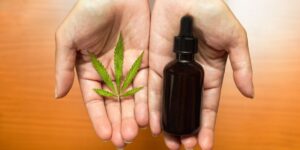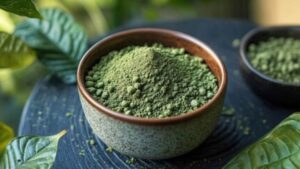Life is an adventure of a recovering addict characterized by the process of finding oneself, strength, and a continuous search for balance. The capacity to provide healthy boundaries is one of the essential skills that any recovering addict must have, as it is a very empowering skill. Boundaries are useful in building respect, organization, and stability- the foundations of sustaining long-term progress.
In this blog, we’ll see how the addiction process starts, the steps that are core to recovery, the use of boundaries, how you can get those recovering on their own, and steps that apply in daily living in recovery.
Understanding Addiction: Where Does It Begin?
The healing process begins with the acquisition of knowledge of the ways that addiction develops. Addiction is not crass; it targets both the elderly and the youth who may be exposed to the behavior due to different reasons.
The causes of addiction are the age of first use, the environment, genetic background, mental health-related issues, peer pressure, and the lack of family engagement.
Notably, prolonged exposure at an early age will expose one to greater susceptibility, particularly amongst the teenage group, as brains are still in development stages.
The science of addiction depicts that it is not an issue of willpower. Drugs and some forms of behavior change the brain’s reward systems. This may result in a trend of the persistence of use despite the negative effects, and this is the reason why, during recovery, a lot of emphasis should be on compassion rather than judgment.
Steps to Recovery from Addiction
Recovery from addiction is not a one-off event but a phased journey. Understanding these stages can help recovering addicts, their families, and supporters foster patience and resilience.
The Five Stages of Addiction Recovery
- Precontemplation: The individual may not recognize their behavior as problematic. This stage often involves denial or resistance to change.
- Contemplation: Awareness begins to grow. Ambivalence is common, as the pros and cons of substance use are weighed.
- Preparation: The willingness to change solidifies. Plans are made, such as considering a support group, therapy, or making lifestyle changes.
- Action: Concrete steps are taken to alter behaviors, seek help, and change environments.
- Maintenance: The individual works diligently to sustain the new changes and avoid relapse, fostering healthier relationships and stability.
These stages highlight a progressive, non-linear process. It’s normal to move back and forth between stages, and setbacks are not failures but signals for added support.
The Role of Recovery Programs
It helps many to find their way in what is called structured programs that attain a sense of acceptance, taking responsibility, spiritual growth, self-reflection, and service.
Such measures encourage self-change and self-awareness extension that are essential to boundary building, which will come later on in the recovery.
Recovery Addict vs. Recovered Addict: It’s a Journey, Not a Destination
Language is an issue in the recovery community. The identity of a recovering addict represents an aspect of continually working on oneself and being more alert to development, rather than a program of being cured.
Such an attitude enables people in recovery to be aware of their triggers, fluctuations in relationships, and self-development, so the notion of boundaries never stops being important.
Can an Addict Recover on Their Own?
An individual may very well go through addiction and beat it without the help of a professional, but again, it is a minority case. Statistics indicate that a good number of individuals recover on their own in many cases through a major change of lifestyle, avoiding triggers, or finding support via informal networks.
It is in the professional programs that one can obtain organized assistance, relapse prevention methods, and community, an achievement that is difficult to accomplish alone. To most people, a combination of the two would serve them best, and the contact should always be welcome.
Why Setting Boundaries Is Essential for the Recovering Addict
Boundaries are the invisible lines that separate your needs, feelings, and responsibilities from others’. For recovering addicts, setting these boundaries empowers you to:
- Protect your sobriety: Safeguard against people, places, and things that may tempt relapse.
- Promote self-respect: Affirm your value and wellness.
- Improve relationships: Clarify what is permissible, reducing tension or misunderstandings.
- Manage stress and triggers: Create room to process your emotions in safe, healthy spaces.
Without boundaries, you risk exposure to unhealthy situations, eroding both resolve and self-worth.
Types of Boundaries in Recovery
1. Physical Boundaries
- Define your personal space and exposure (e.g., avoiding parties where substances are present).
- Respect your comfort with physical proximity or touch—advocate for your needs unambiguously.
2. Emotional Boundaries
- Protect yourself from emotional overload by stepping back from unsupportive or toxic conversations.
- Affirm your right not to share details of your recovery with those who aren’t supportive.
3. Time Boundaries
- Schedule regular self-care and limit time with people or activities that might threaten sobriety.
- Dedicate blocks of time for meetings, reflection, or hobbies that support your wellness.
4. Material Boundaries
- Decide who has access to your possessions or finances, especially if sharing or lending might compromise your recovery.
5. Mental Boundaries
- Defend your philosophies and recovery choices—avoid debates or pressure to justify your journey.
6. Internal Boundaries
- Honor your values, refusing to participate in situations or conversations that compromise your integrity.
Steps to Setting and Enforcing Healthy Boundaries
1. Reflect on Your Needs
What situations, environments, or relationships threaten your recovery? What makes you feel safe, supported, or empowered? Self-awareness is the first step.
2. Make Boundaries Explicit
Clearly and confidently express your boundaries. Use “I” statements—for example,
- I’m not comfortable being around substances.
- I need to leave if alcohol is present.
Provide specific reasons to avoid ambiguity, especially with friends and family.
3. Communicate with Compassion
Not everyone will understand your boundaries. Offer explanations when necessary, but remember, you are not obligated to justify self-protection beyond what you are comfortable sharing.
4. Be Consistent Without Guilt
Maintaining boundaries means upholding them even when it feels uncomfortable. Consistency builds self-respect and trains others to respect your recovery.
5. Prepare for Pushback
Expect some resistance, especially from those accustomed to old patterns. Stay firm, boundary setting is an act of self-care, not punishment or control.
6. Review and Revise
As you grow in recovery, your boundaries may shift. Reassess regularly and don’t be afraid to adjust as necessary to support your wellbeing.
Practical Examples of Boundaries for Recovery Addicts
- Declining invitations to events where substances are present.
- Requesting loved ones not to use substances in your presence.
- Setting limits on discussions about past behaviors if they hinder your recovery.
- Allocating time for support group meetings, exercise, or relaxation.
- Refusing to loan money for purposes that could compromise your recovery.
The Ripple Effect: Boundaries in Relationships
Families and friends must also set boundaries, protecting their well-being while supporting the person in recovery. For example:
- Refusing to enable substance use.
- Insisting on honest communication.
- Declining to cover up or excuse unhealthy behaviors.
Support Systems: You Don’t Have to Go It Alone
There is always help, as a recovering addict or a friend of an addict. National helplines provide confidential help which is in the form of guidance, information, and access to support networks.
Building connections among other individuals in recovery groups, online support groups or through counseling may reaffirm your path, reinforce your boundaries, and give you a sense of community.
Key Benefit of Recovery Support Products
Although one should never overclaim medical/therapeutic perks, recovery aids, and community resources are unmatched at making it easy to track the progress, remain focused, and feel more accountable.
Apps that bring self-reflection, monitoring, or daily reminders can be priceless in terms of keeping you both motivated and structured, enabling you to practice healthy boundaries and a core requirement of a lifelong recovery process.
Final Thoughts
Recovery is not about perfection, and recovery is not about being where one wants to be at once. Recovery is a moment-by-moment, a boundary-by-boundary experience.
When you learn to live with the addiction, decide to and follow through with the process of healing, and keep a strong guard against intrusion into your space, you create a life where there is integrity, conditions to be respected, and harmony is where it should be. The thing is to keep in mind that establishing boundaries is not selfish; it is necessary.
Also, Read:







